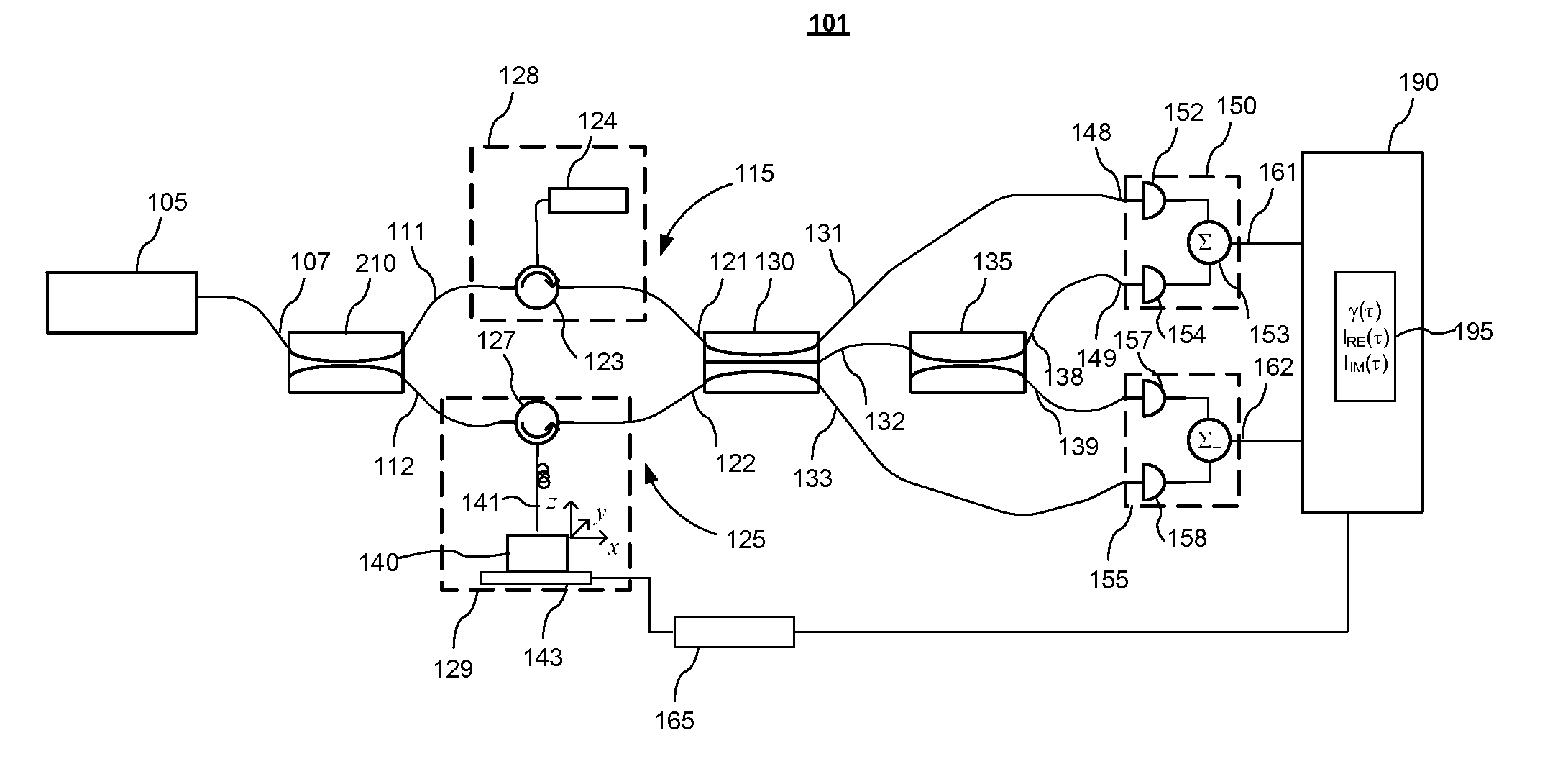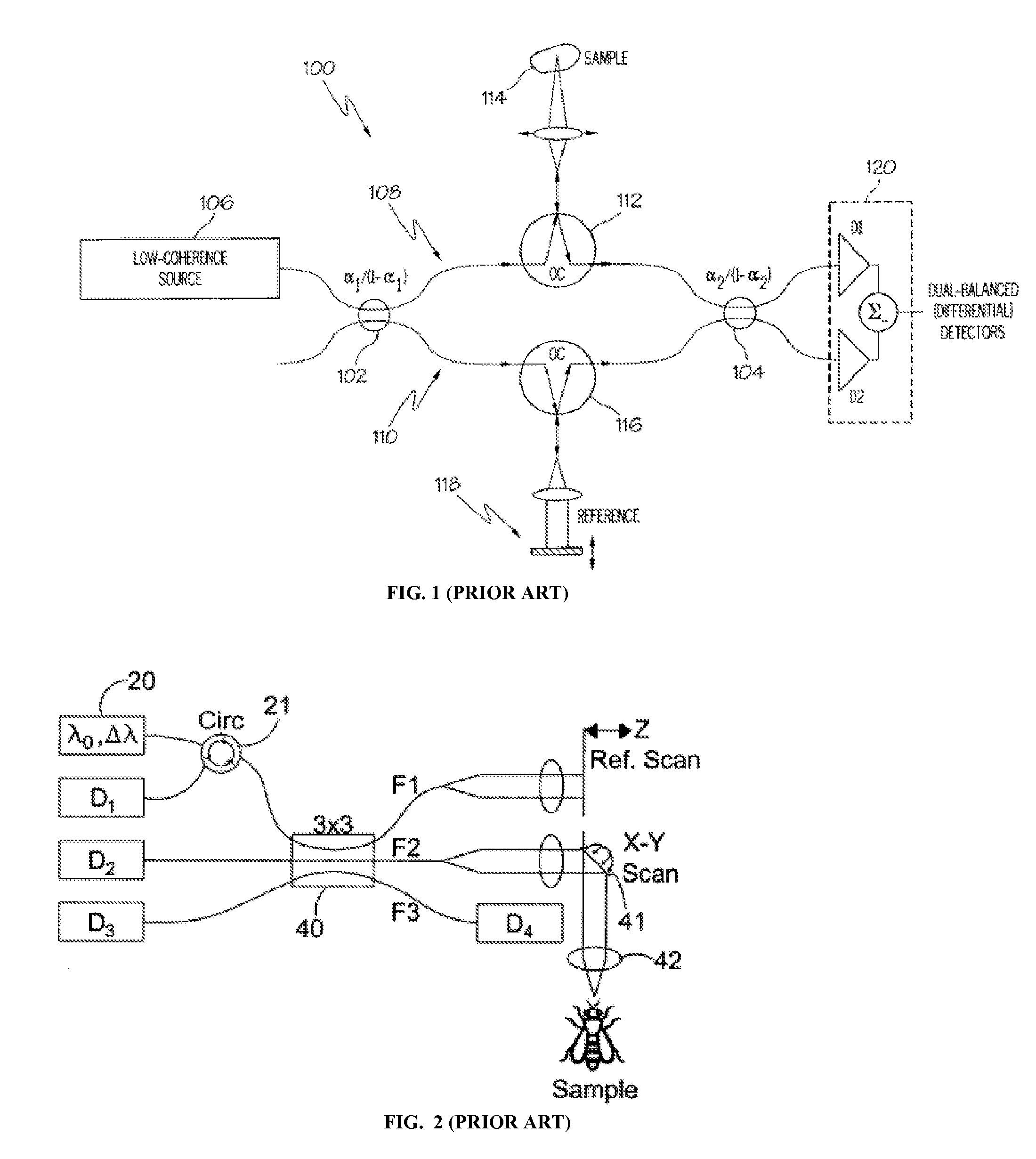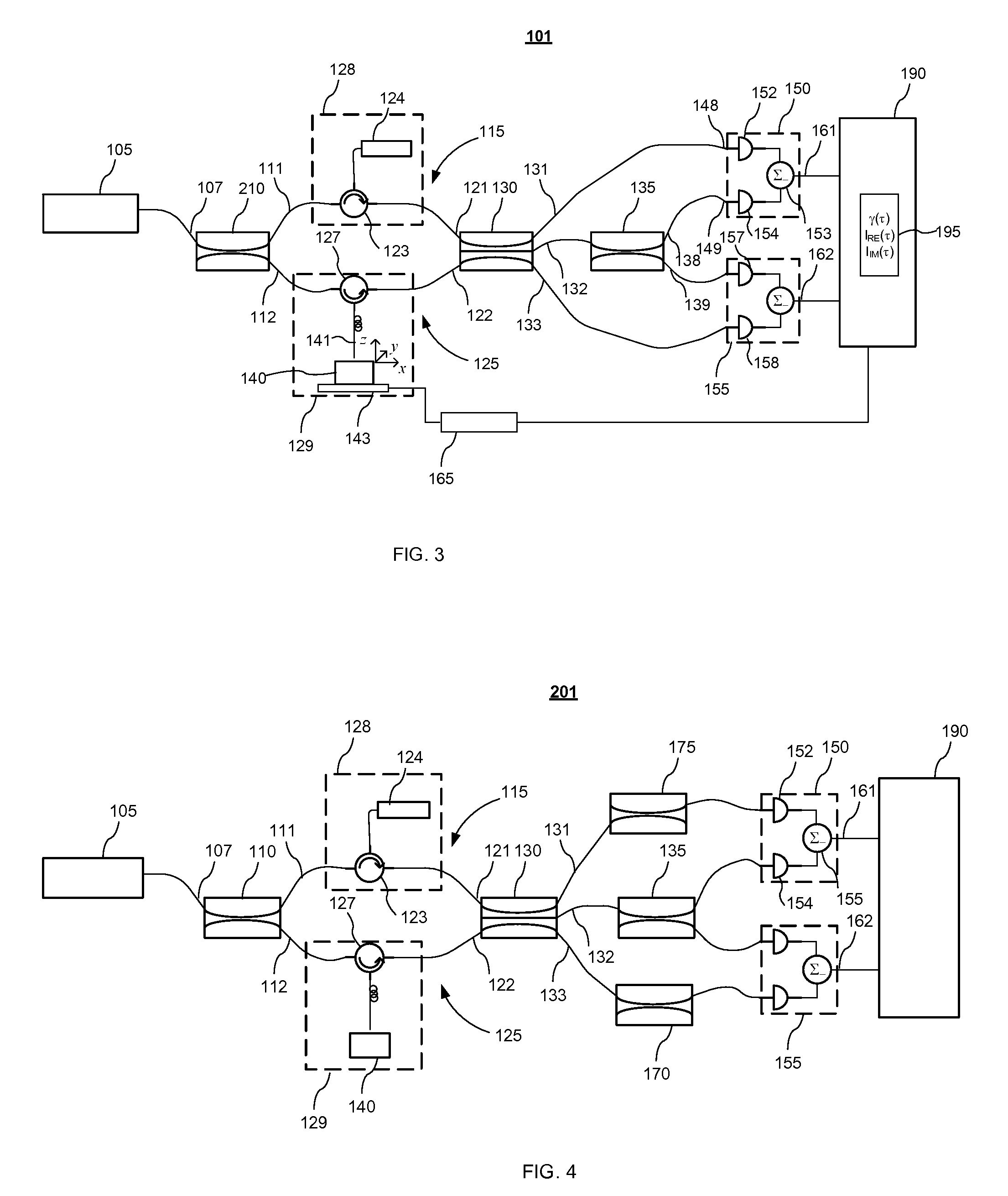Interferometric system for complex image extraction
an interferometric system and image extraction technology, applied in the field of optical interferometric systems, can solve the problems of affecting the processing efficiency of optical interferometers, etc., and achieves the effects of reducing the number of optical interferometers
- Summary
- Abstract
- Description
- Claims
- Application Information
AI Technical Summary
Problems solved by technology
Method used
Image
Examples
first embodiment
[0043]With reference to FIG. 3, in the invention an interferometric system 101 includes a Mach-Zehnder interferometer formed by a beamsplitter 210, hereinafter also referred to as the first beamsplitter, and a multi-port coupler 130, hereinafter also referred to as the first coupler. The beamsplitter 210 has an input port 107 and two output ports 111 and 112, which are coupled to respective input ports 121 and 122 of the first coupler 130 by two connecting arms 115 and 125. In the shown example the beam splitter 210 is embodied as a 2×2 waveguide, for example fiber-optic, directional coupler having one of the input ports unused and will also be referred to hereinafter as the 2×2 coupler 210; alternatively the beam splitter 210 can be embodied using bulk optics or any other suitable optical power splitting device known in the art. One of the connecting arms of the Mach-Zehnder interferometer, i.e. the first arm 115 includes adjustable time delay means 120 formed in this embodiment by...
second embodiment
[0060]With reference to FIG. 4, an alternative second embodiment of the invention provides an interferometric system 201 which is similar to the interferometric system 101 shown in FIG. 3, but includes two additional optical attenuators 170 and 175, in the shown configuration embodied as 2×2 couplers, that are coupled between the first 131 and third 133 ports of the 3×3 coupler 130 and respective optical input ports of the differential detectors 155 and 150, so as to equalize dc components of the optical signal at both ports of each of the differential detectors 150 and 155. In this embodiment, the differential detectors 150 and 155 are balanced so as to provide electrical output signals wherein the dc components are substantially canceled, thereby providing optimal cancellation of common mode noise.
[0061]In both embodiments, the ac, or interferometric components I1ac, I2ac of the first and second electrical signals that are output through the ports 161 and 162 have a phase shift Δφ...
PUM
 Login to View More
Login to View More Abstract
Description
Claims
Application Information
 Login to View More
Login to View More - R&D
- Intellectual Property
- Life Sciences
- Materials
- Tech Scout
- Unparalleled Data Quality
- Higher Quality Content
- 60% Fewer Hallucinations
Browse by: Latest US Patents, China's latest patents, Technical Efficacy Thesaurus, Application Domain, Technology Topic, Popular Technical Reports.
© 2025 PatSnap. All rights reserved.Legal|Privacy policy|Modern Slavery Act Transparency Statement|Sitemap|About US| Contact US: help@patsnap.com



